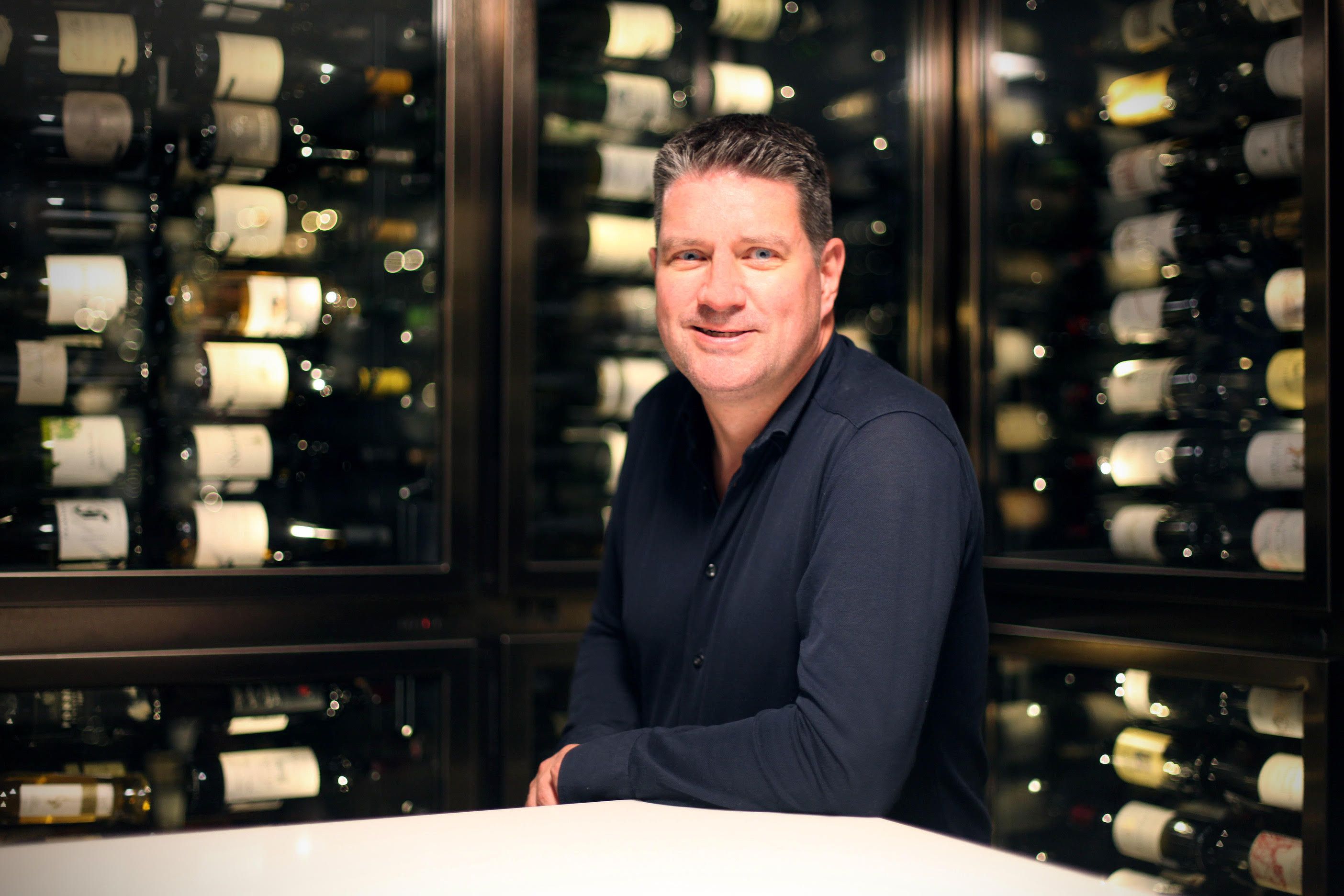You’ve set up your own media and content consultancy business - tell us all about it?
It’s a creative agency, producing content for wine and spirit brands, from digital and printed material to wider marketing campaigns. So we’re doing everything from copywriting and copy editing to developing tone of voice and designing marketing collateral and press materials. Going forwards, we’ll be ramping things up to include larger projects featuring photography and videography, as well as offering consultancy on marketing strategies, labelling and branding. Whatever the scope of work, the idea is to draw on an authentic editorial approach to deliver content that inspires and engages consumers as well as meeting commercial criteria.
Why do you think there is room for another media consultancy business when the wine and drinks industry is already well served with a wide number of PR, branding and marketing agencies?
Well, mine isn’t a PR or marketing agency, as such. I’m focusing solely on creating wine and spirits content, across a range of formats – and to my knowledge, there’s no-one else out there doing just that.
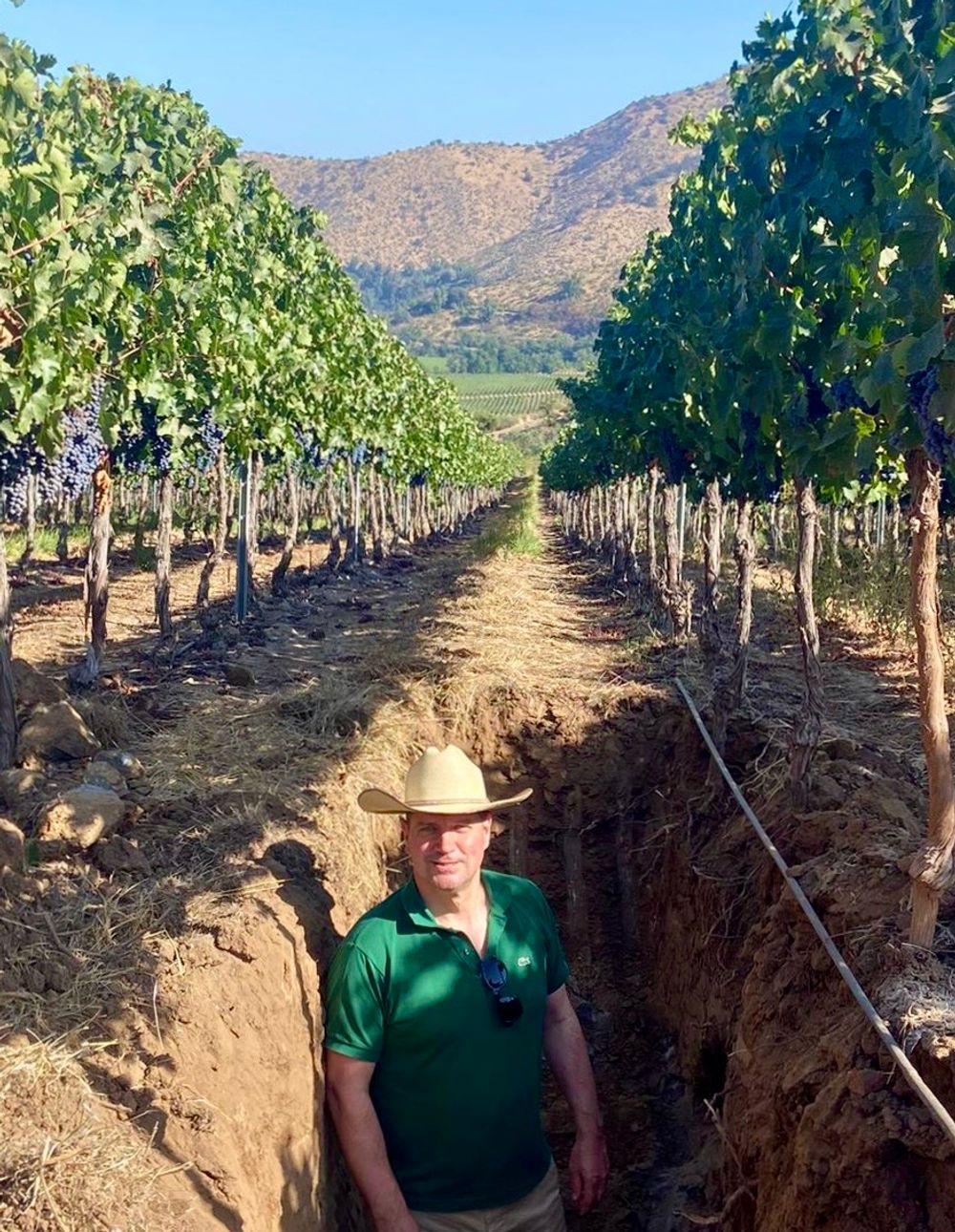
Guy Woodward is looking to dig deep into what the real authentic stories are for wine producers and drinks brands with his Grand Cru Creative business
But most importantly, the industry needs it. We all know that, in the wine trade, we’re very good at talking to each other, but less good at engaging with consumers. Yet content is so integral these days – every consumer-facing business produces it, even if it’s just a simple website or digital newsletter, and it makes a huge difference to consumer perception. The more forward-thinking brands are turning out blogs, videos and printed material, but not all of these are as compelling as they could be. That’s where we hope to help…
And you’re confident that there is a demand for such input?
Very much so. I’ve spent the last year testing the water, by undertaking projects under my own steam, via existing contacts and word of mouth, and it’s shown me that there is a real appetite for this sort of expertise. I’ve been able to build up a nice client list, largely on a consultancy basis, along with various copywriting and copy editing commissions. Now the next stage is to take on larger projects that require more specialist skills – photography, videography – that I don’t have, but that I commission from contributors, just as I did when editing Decanter and Club Oenologique.
You talk about telling wine and drinks stories in a more engaging and compelling way. Can you give an example of what you mean and how you might approach telling a company's story in a more effective way?
We’re always told that great wine is made in the vineyard. It’s a truism – but it’s also a cliché. And most consumers don’t go to vineyards very often, and tend to glaze over when you start telling them about the rootstock, clone or trellising system that is behind the wine. If you tell them, on the other hand, that the winemaker was a professional stunt man who broke his neck in an accident on location in New Zealand, was tended back to health by a devoted nurse, then married her and retrained as a winemaker before the pair of them bought a vineyard in Hawke’s Bay, well, doesn’t that sound more enticing?
OK, not every story is so compelling – I made that one up – but you get the picture. We need to frame wine in language that people can relate to – and this is just as true with fine wine as it as in the mass market.
People and places are what get consumers going. I was at the launch of Andrew Caillard’s magnum opus, The Australian Ark, recently, which is a hugely comprehensive and authoritative work spanning 1,600 pages and written by a Master of Wine, and at the end of his presentation he came out with a killer line: “Personality outweighs terroir every time”.
You also talk about having ‘an authentic editorial approach to deliver content that inspires consumers as well as meeting a brand’s commercial criteria’. Can you go into more detail about that?
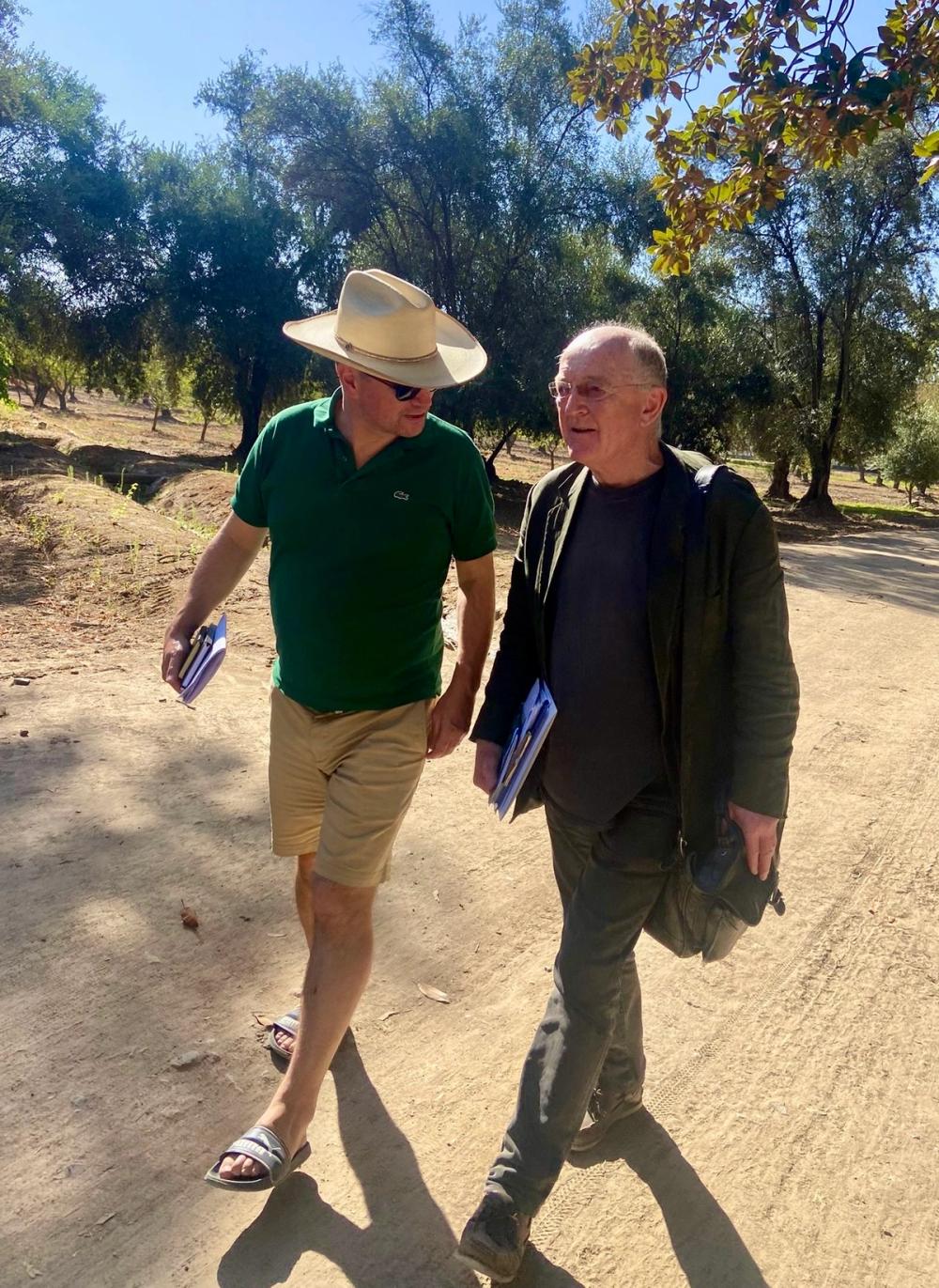
Guy Woodward has a wealth of experience as a leading drinks journalist and editor - here on a recent trip to Chile and Argentina with the great Oz Clarke
There is so much content around these days. Just look at your inbox, and the number of emails you get from brands every day. Most of them are immediately trying to sell you something, and I bet you delete half of them without even reading them.
What brands should be doing is engaging with their audience by providing content you want to read or watch or listen to, and establishing a community around this, where people feel engaged, valued and part of something. Loosen up, tell stories, be human – and ease off the hard sell. That way people engage with you, start to trust you – and then you can think about selling them something.
You studied journalism and then worked in the business press and national newspapers before moving into wine. What do you think gives a trained professional journalist the edge when it comes to creating commercial content for companies?
Rigour and accuracy, for one thing. You see so much amateurish content – and I don’t just mean badly written, grammatically incorrect, mis-spelt copy. There’s lots of lowest-common-denominator content that is just dull and predictable. But it’s also about quality – and spotting the story.
Most wine drinkers, especially at the fine wine end of the market, are smart, educated, relatively sophisticated types. They can see through marketing-led, cliché-riddled puff and stuff that’s been done before. You have to understand what resonates, and engage on their terms.
You are already working with some wine and spirits companies – what sort of projects have you been doing?
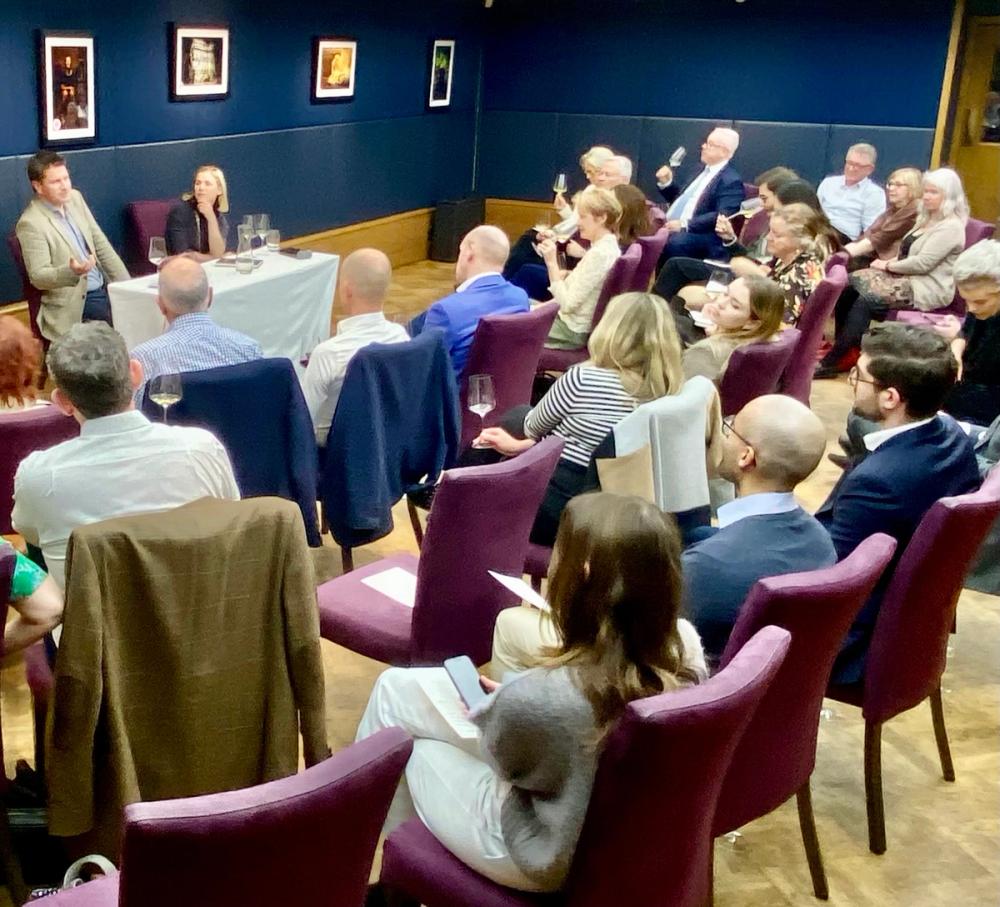
Guy Woodward in full flow at a 67 Pall Mall event with Rebecca Gibb MW
I’ve been working with 67 Pall Mall for the past year on its member comms, and have also started producing a newsletter for them, with interviews and profiles seen through the prism of the club. I’m doing some similar work with Jeroboams, to inject more personality into the stories behind the wines it sells. Then I’ve done some more evergreen, factual content for Justerini & Brooks and Bordeaux Index, and more lifestyle, aspirational content for the COMO hotel group, The Macallan and Harrods.
You used to work at Harrods, creating content about the brands it sells. Was that particularly useful in shaping your approach to your own business?
Yes and no. Harrods is an amazing place with an astonishing reach. It works with
many of the world’s top brands, where the comms has to totally reflect their identity. Sometimes this is more about creating a mood or an aspiration rather than detailing the product – some fashion and jewellery brands barely mention the product at all, but still manage to make it hugely desirable.
Wine is very transparent by comparison, with lots of nerdy detail about what’s in the bottle, and to be honest, I much prefer that. Increasingly, consumers want to think they’re buying into authenticity. But we just need to inject some personality, and make it a little more inspirational and aspirational.
Looking at the wine world, what sort of commercial content have you seen recently that you’ve admired and why do you think it is effective?
The first thing I learned at journalism school was to write for your reader. Which is to say it’s all about knowing your target clientele and catering for them. That’s why The Sun is, much as we may hate to admit it, a good newspaper – it knows its readers’ touchpoints and it hits them, in language they can relate too.
So take The Wine Society, for instance. It has a nice, pleasant, reassuring tone that blends accessibility and authority in a way that is just right for their audience. You and I might find it a little twee in places, but it totally suits their demographic.
Berry Bros has traditionally been pretty good at this – its podcast was quite pioneering, and I like things like its No.3 newspaper, which doesn’t list any wines, but simply explores wider topics in an intelligent way that is the kind of thing its customers expect, and will doubtless make them feel more warmly towards BBR.
Fine + Rare took this to the next level with its super-lavish Fondata magazine, a ‘journal of adjacencies’ which must cost it a fortune, but no doubt puffs up the ego of its high-end clientele by celebrating craft and provenance. Its online content is more squarely wine-focused and is on the money too, with a reassuring blend of authority and familiarity. And I think Justerinis’ recent en primeur coverage has been nicely done, allowing the personality and authority of their buyers to come across (they’re a client, I should add).
Just because we’re dealing in fine wine doesn’t mean we have to be formal and reverential. Particularly with something like en primeur, when countless merchants are sending out several emails a day and consumers are inundated, you need to stand out by showcasing your personality via a clear tone of voice. But first of all, of course, you need to know what that personality is.
What do you see as your key points of difference vs some of your peers offering similar services?
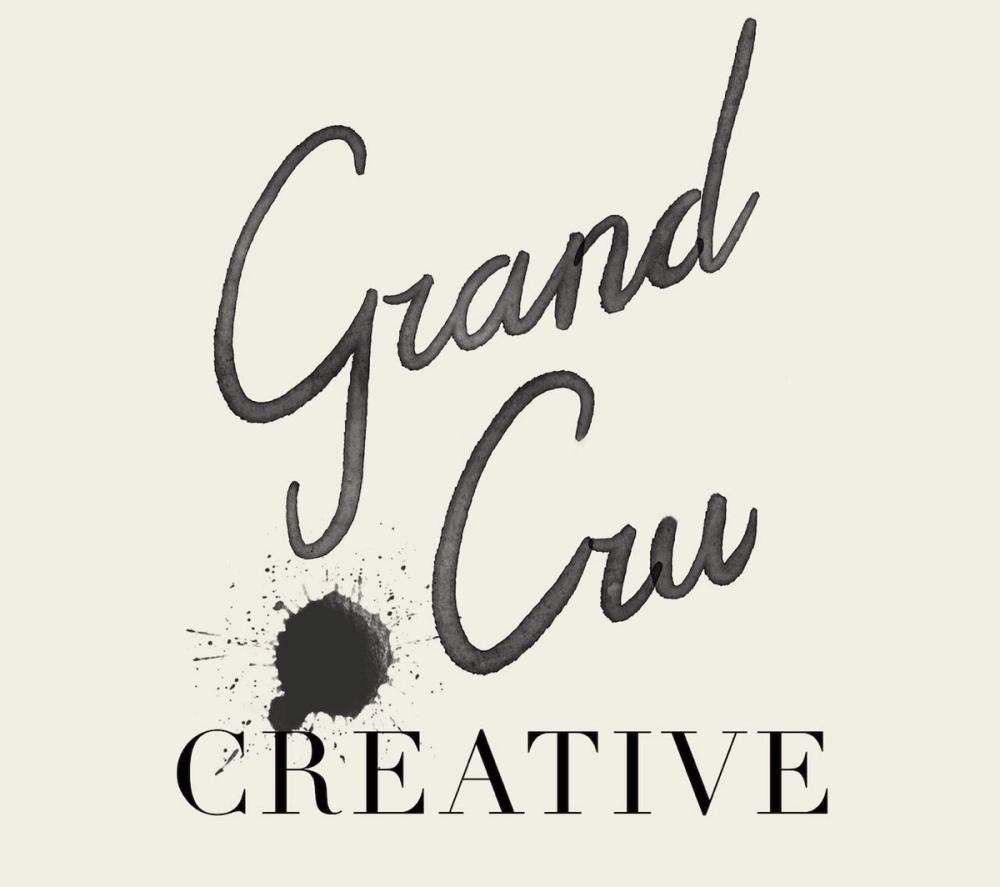
Guy Woodward is confident Grand Cru Creative can offer an editorial consultancy service not currently available to the wine and wider drinks industry
I think the key is that we’re focused solely on the actual content itself. So we won’t be developing websites (I wouldn’t know how) or running brands’ social media accounts. We’ll be creating content, be it in digital, printed or audio/video format, for brands to disseminate to their audience as they see fit (though, of course, we’ll be able to help them produce the actual newsletters, brochures, even books, via a partnership with John Stimpfig’s First Press Editions).
Also, we’ll be using proper journalists – my background is on the editorial side of magazines, rather than the commercial side. As a consequence, I have worked with writers, photographers and other content creators who also came from an editorial mindset, producing compelling content first and foremost, with commercial considerations a secondary factor. That, in my experience, is how you engage and build trust with an audience.
And we’ll be aiming for the fine wine world rather than the mass market – which probably means more long-form, in-depth content rather than TikTok and Instagram.
You mention social media. Don’t brands need to encompass this to engage a new audience?
Some brands do, for sure, but for me this is more at the mass market end of the spectrum, which values style over substance. These days you see a lot of very slick but rather lightweight material for the transient TikTok crowd. Other people do that very well and lots of it is really good. But that’s not our specialism or our market – we’re more interested in in-depth, ‘sticky’ content for a more engaged, committed audience, very much at the fine-wine end of market.
I know there’s lots of talk about the wine industry targeting young consumers via TikTok and Instagram, but a personal view is that the audience there is more promiscuous, and follows accounts for the aesthetics rather than the subject. They change topic and focus very quickly, from wine to dogs to make-up. So even if they engage with the content, that doesn’t necessarily translate to sales or brand recognition.
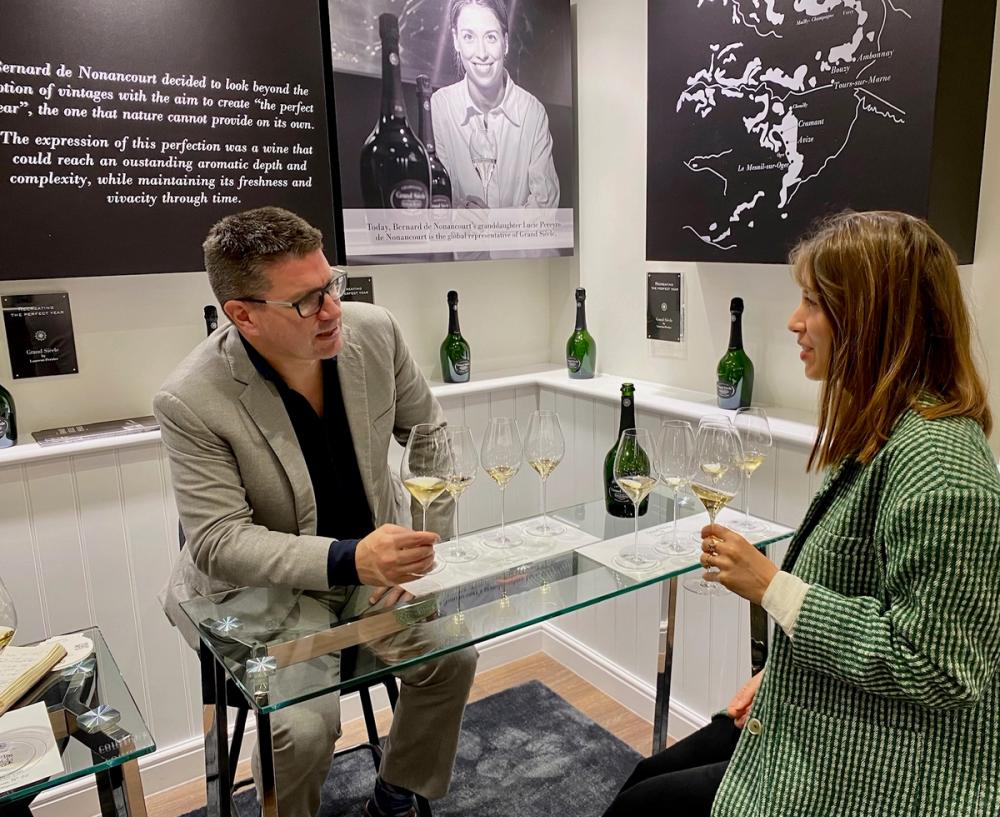
Guy Woodward in interview mode with Lucie Pereyre de Nonancourt of Laurent-Perrier
Don’t get me wrong, video content is hugely important, and arguably the most compelling form of engagement. But for the clients I’m targeting, this needs to be long-form videos that deliver tangible takeaways, whether hosted on YouTube or a brand’s own site. I’ll leave Instagram Reels for my dog videos.
You have a reputation for speaking your mind on key industry issues – I see you recently had a pop at Majestic [in assessing the chain’s takeover of Vagabond, Woodward bemoaned Majestic’s ‘rather safe’ range]. Will you need to be more mindful of what you say publicly when working in a more commercial, client-focused role?
Ha! Majestic is an interesting case. I didn’t really have a pop at them – I’ve always had a fondness for the brand, and think it plays a huge role for the industry in making wine accessible and aspirational for curious wine lovers, and as a training ground for staff. I also buy a fair bit of wine there, as it’s my closest wine shop.
But I do think their marketing rather reflects the conservative nature of their range – it’s all ‘award-winning wines’ from ‘esteemed regions’ that ‘pair perfectly with grilled meats’. You expect a brand like Ocado to be fairly conservative in their comms, because they’re catering largely for a suburban, middle-England demographic for whom wine is an optional extra. But Majestic has a slightly hipper, more urban crowd, who are hopefully on a journey into and around wine, so the comms could be a little less vanilla and a little more punchy. And if they want to give me a call to discuss how they could do that, they know where to find me!
But yes, I write a column for the trade where I’m paid to give my opinion, and I don’t want this to suddenly become bland. Naturally, though, I won’t be writing about any clients, and nor would I put the boot into their competitors just for the sake of it. But I’ll certainly continue debating pertinent industry issues – just hopefully without completely alienating potential clients. That said, I only really want to work with people and brands I feel aligned with, so I won’t be putting a zip on it just yet.
So what sort of clients would you like to work with?
I’m focusing largely on consumer-facing brands – so retailers and producers (though importers – PLEASE come and ask me how to better run your events – so many tastings and seminars fall down because there’s a disconnect between the host and the audience – winemakers need moderators!).
There’s a whole load of producers across Europe whose content is pretty dire, particularly higher up the chain. I did a project with Bordeaux Index last year that involved looking through the websites of most of the Bordeaux classed growths, and very few of them give the impression of being a luxury product.
But English wineries are my first port of call. Most are relatively small enterprises trying to build a brand identity, are selling direct to consumers, and have a marketing manager with a million and one things to do who may or may not specialise in content. I edited Henry Jeffreys’ fantastic book on English wine last year, Vines in a Cold Climate, and there’s so many great stories to tell.
Plus, more than anything, I’d love to help further champion what has been the most exciting industry development during my 20 plus years in wine.
* If you would like to hear more from Guy Woodward or find out more about Grand Cru Creative go to his website here.
